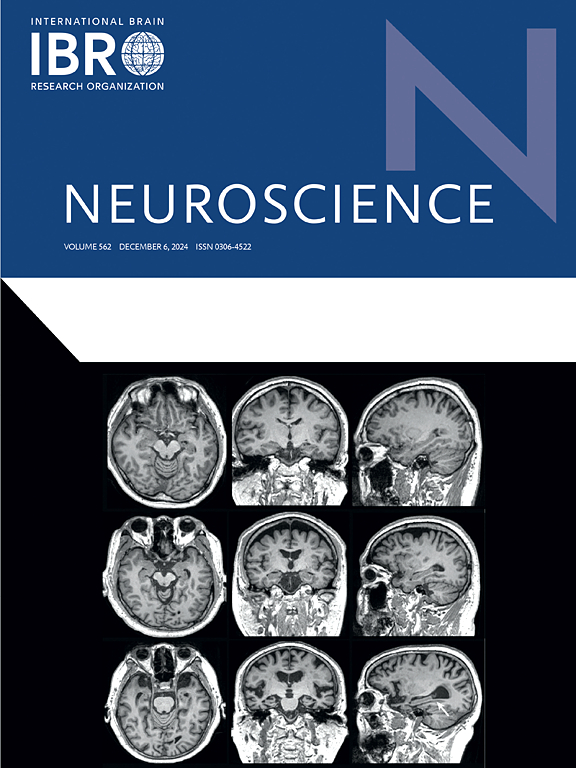阴极高清晰度经颅直流电刺激改善帕金森病伴可能的快速眼动睡眠行为障碍患者的睡眠和运动症状:一项试点开放标签研究
IF 2.9
3区 医学
Q2 NEUROSCIENCES
引用次数: 0
摘要
目的观察高清经颅直流电刺激(HD-tDCS)对帕金森病(PD)疑似RBD (PD- prbd)患者快速眼动睡眠行为障碍(RBD)症状及睡眠质量的影响。方法共招募74名受试者(女性32名,男性29名),其中PD- prbd患者30名,PD无RBD患者27名,健康对照17名。其中,经快速眼动睡眠行为障碍筛查问卷(RBDSQ)诊断符合纳入标准的PD-pRBD患者17例,在常规抗pd药物治疗的基础上,连续10天在左侧M1区进行HD-tDCS正极干预,每天1次,持续20分钟。采用RBDSQ、香港RBD筛查问卷(RBDSQ- hk)、匹兹堡睡眠质量指数(PSQI)、Epworth嗜睡量表(ESS)和帕金森病睡眠量表(PDSS)评估RBD症状和睡眠质量。此外,国际运动障碍学会赞助修订统一帕金森病评定量表(MDS-UPDRS)和Hoehn &;采用Yahr分期量表(H&;Y)评估运动症状和疾病严重程度。结果连续治疗10天后,PD-pRBD患者的RBD及睡眠症状均有明显改善。其中,RBDSQ、RBDQ-HK、PSQI和ESS评分下降,而PDSS评分上升。我们还观察到MDS-UPDRS III评分的降低和患者运动症状的改善。同时,PDSS的变化与MDS-UPDRS III基线值呈正相关。结论hd - tdcs是改善PD-pRBD患者睡眠和运动的有效补充疗法。本文章由计算机程序翻译,如有差异,请以英文原文为准。
Cathodal high-definition transcranial direct current stimulation improves sleep and motor symptoms in Parkinson’s disease with possible rapid eye movement sleep behaviors disorder: A pilot open-label study
Objective
To observe the effects of high-definition transcranial direct current stimulation (HD-tDCS) on rapid eye movement sleep behaviors disorder (RBD) symptoms and sleep quality in Parkinson’s Disease (PD) patients with possible RBD (PD-pRBD).
Methods
74 subjects were recruited (32 females and 29 males), including 30 PD-pRBD patients, 27 PD patients without RBD, and 17 healthy controls. Among them, 17 PD-pRBD patients diagnosed by the Rapid Eye Movement Sleep Behavior Disorder Screening Questionnaire (RBDSQ) and meeting the inclusion criteria received cathodal HD-tDCS intervention in the left M1 area for 10 consecutive days, once a day for 20 min, on the basis of conventional anti-PD drug treatment. The RBDSQ, RBD Screening Questionnaire Hong Kong (RBDSQ-HK), Pittsburgh Sleep Quality Index (PSQI), Epworth Sleepiness Scale (ESS), and Parkinson’s Disease Sleep Scale (PDSS) were used to assess RBD symptoms and sleep quality. Additionally, the International Movement Disorders Society Sponsored revision of the Unified Parkinson’s Disease Rating Scale (MDS-UPDRS) and the Hoehn & Yahr staging scale (H&Y) were used to assess motor symptoms and disease severity.
Result
After 10 days of continuous treatment, the RBD and sleep symptoms of PD-pRBD patients significantly improved. Specifically, the RBDSQ, RBDQ-HK, PSQI, and ESS scores decreased, while the PDSS score increased. We also observed a reduction in MDS-UPDRS III scores and an improvement in patients’ motor symptoms. At the same time, changes in PDSS were positively correlated with the baseline values of MDS-UPDRS III.
Conclusion
HD-tDCS could be a useful complementary treatment for improving sleep and movement in PD-pRBD patients.
求助全文
通过发布文献求助,成功后即可免费获取论文全文。
去求助
来源期刊

Neuroscience
医学-神经科学
CiteScore
6.20
自引率
0.00%
发文量
394
审稿时长
52 days
期刊介绍:
Neuroscience publishes papers describing the results of original research on any aspect of the scientific study of the nervous system. Any paper, however short, will be considered for publication provided that it reports significant, new and carefully confirmed findings with full experimental details.
 求助内容:
求助内容: 应助结果提醒方式:
应助结果提醒方式:


